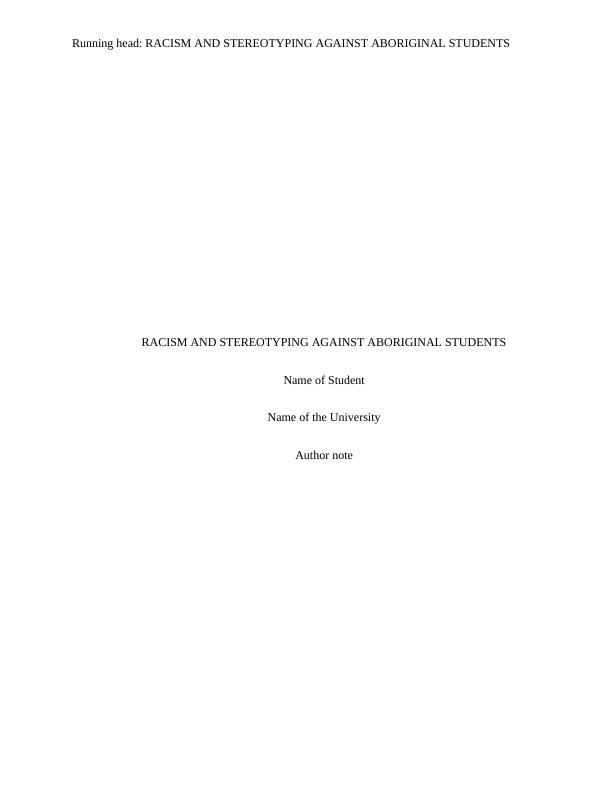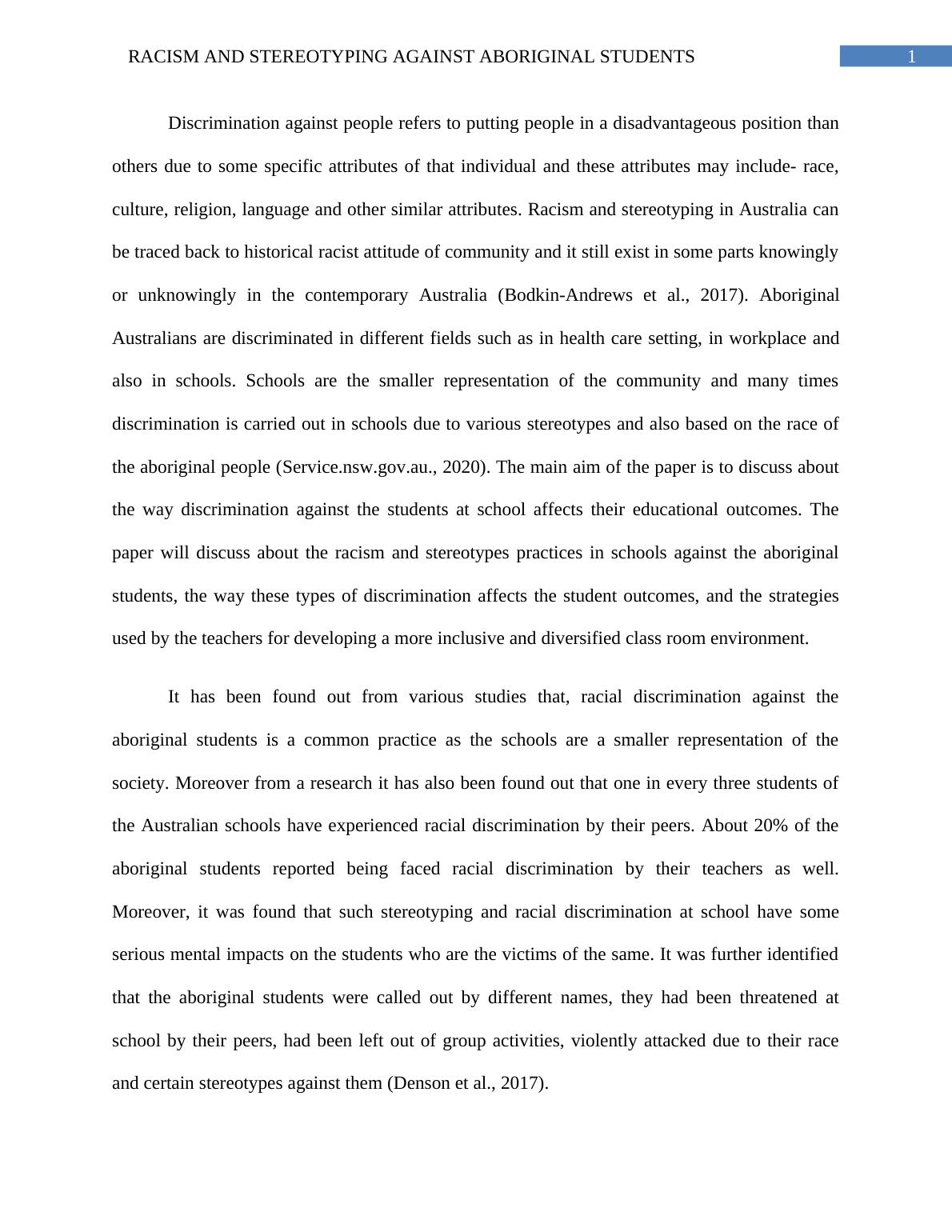RACISM AND STEREOTYPING AGAINST ABORIGINAL STUDENTS.
Write a 1000 word critical essay addressing key issues on the educational needs of Aboriginal and Torres Strait Islander students in secondary schools. Choose one essay option: 1) Examine the link between experiences of racism and poor educational outcomes for Indigenous students and outline strategies to overcome such experiences; or 2) Explore the role of Aboriginality and identity in the success or failure of schooling.
Added on 2022-07-28
About This Document
please see a attach
RACISM AND STEREOTYPING AGAINST ABORIGINAL STUDENTS.
Write a 1000 word critical essay addressing key issues on the educational needs of Aboriginal and Torres Strait Islander students in secondary schools. Choose one essay option: 1) Examine the link between experiences of racism and poor educational outcomes for Indigenous students and outline strategies to overcome such experiences; or 2) Explore the role of Aboriginality and identity in the success or failure of schooling.
Added on 2022-07-28
End of preview
Want to access all the pages? Upload your documents or become a member.



